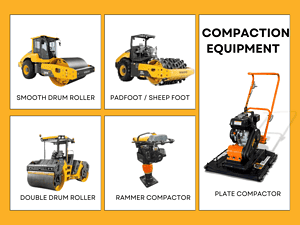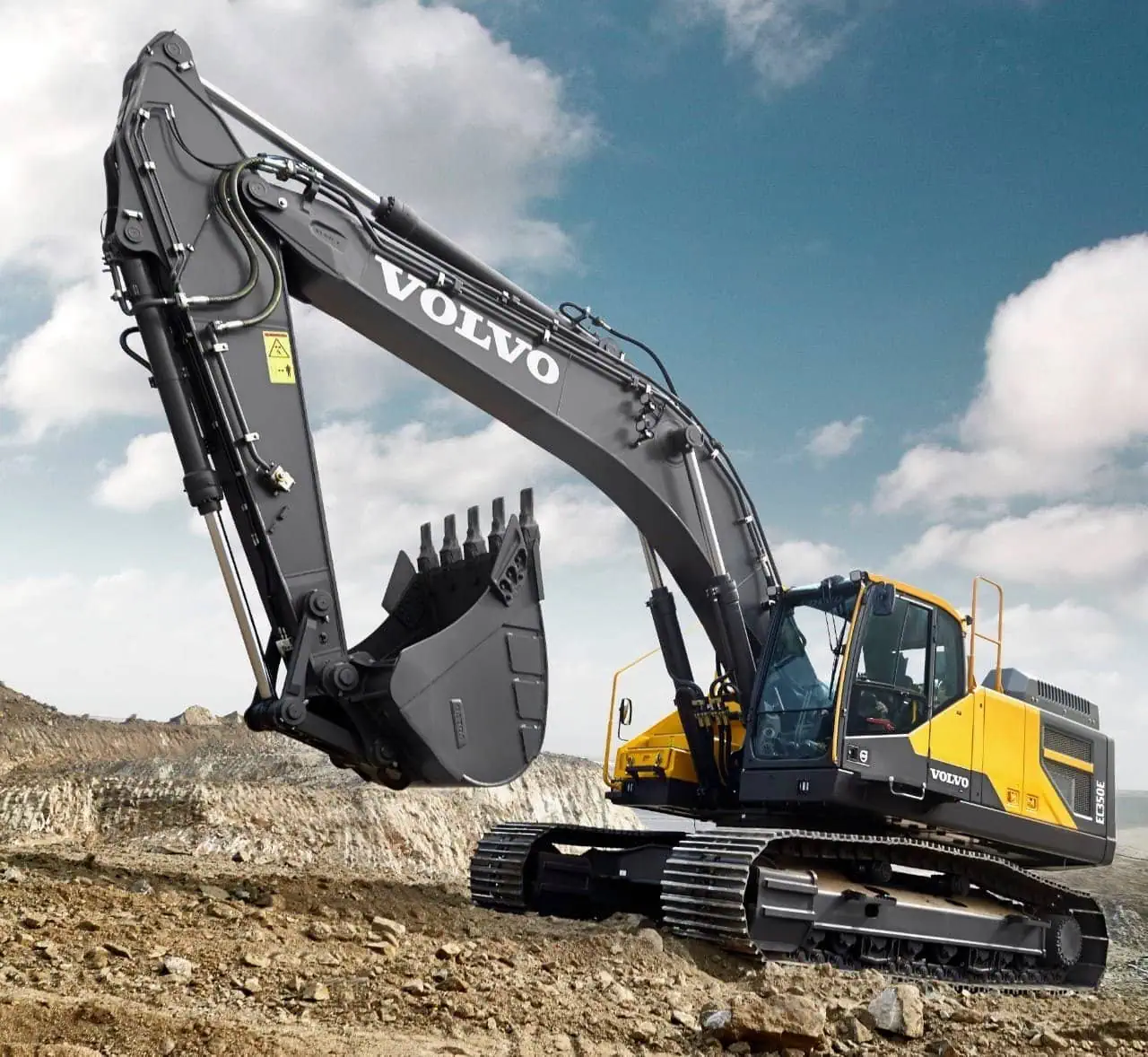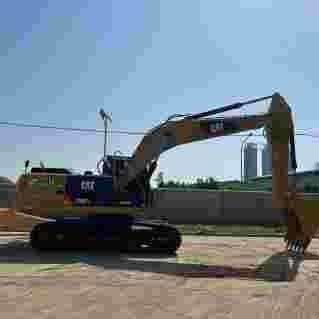A used earthly moving equipment could be a huge risk to buy if you don’t know how to assess it properly. Hidden damage and worn-out parts may cost thousands of dollars in downtime and repairs. This article will show you how to assess a used earth moving machine to avoid costly mistakes and make a killer purchase.
Before purchasing used earthmoving equipment, it’s crucial to inspect its condition to avoid unexpected costs and future breakdowns. Key areas to assess include the engine, hydraulic system, undercarriage, and exterior for any signs of wear and tear. Additionally, reviewing maintenance records and performing an operational test can help ensure the machine will continue to perform reliably. In this guide, we’ll break down the steps for a thorough inspection, offering expert tips on what to look for and how to make a confident, informed decision when buying second-hand machinery.
Let’s dive deeper into each one so you can make an educated decision before you write that check for the used equipment

Оглавление
ПереключатьWhat Are the Key Factors to Consider When Assessing Used Earthmoving Equipment?
Before you buy, understand the four keys to assessing used earthmoving equipment. These keys will tell how well the machine is likely to work for you, as well as how much it’s going to cost you down the road. Here they are:
Usage History
The first thing you want to know about any piece of used earthmoving equipment is where and how it was used. Some machines have worked in tough environments, like at a mining operation, or on a demolition site. That kind of work can eat an earthmoving machine up. Ask the seller where the machine has been used – and how hard it has been used!
Operating Hours
The second thing to think about when evaluating a piece of used earthmoving equipment is the number of hours the machine has worked. Now, more hours might seem like more wear and tear, right? But consider this – a machine with more hours on it might actually be in better condition than the same machine with less hours if the higher hour machine has been properly maintained. For example, the bulldozer with 8,000 hours might perform well for you for the next 8,000 hours, versus the one with 4,000 hours that has never had an oil or filter change. Which machine would you rather own or buy?
Maintenance History
And the third thing is making sure the machine has been maintained. Always ask for the maintenance records. Maintenance records should show you all the oil and filter changes, as well as any major repairs. A well-maintained machine is going to be more reliable and cost you less money in the long run.
Brand and Model
Fourth, consider the brand and model of earthmoving equipment. Some brands have better reputations, or certain models within those brands may be better than others. For example, Caterpillar, Komatsu, and Volvo are all strong brands with great reputations for durability and holding their value when you go to sell them later. Make sure to research a brand or model— even more than a specific machine— to make sure there are no issues that tend to throw you under the bus with a particular brand or model.
How to Inspect the Exterior and Structural Integrity of Earthmoving Equipment?
Number five is the overall appearance of the machine. The external and structural aspects of a machine are critical to its long-term reliability. Number one, the engine and hydraulics might be perfect. But with a bent body, you’ve got nothing. Always try to inspect these critical areas:
Inspecting the Frame and Body for Damage:
Check the attachment, mounting, and movement points on the equipment, as they are the highest stress areas. Inspect the bolts, pins, and alignment, keeping your eyes peeled for any sign of wear, rubbing, or bending. Look for cracks or stress in the metal or other materials around attachment, pivot, or connecting points. Pay attention to any bent items or components that don’t line up correctly. proves all cylinders.
Check Attachments for Wear and Tear:
Attachments such as buckets, blades, and booms are critical for the functioning of the machine. Look for excessive wear, cracks, or repaired breaks on these components. For example, look at the teeth of the bucket or the cutting edges on the blade. These pieces wear out quickly, and if they are worn excessively, they might need to be replaced much sooner than you think, which could add to the cost of your purchase.

How to Assess the Engine and Hydraulic System of Used Earthmoving Equipment?
The engine and hydraulic systems are the heart and soul of any piece of earthmoving equipment. A bad engine or bad hydraulics can lead to costly downtime or expensive repairs. Here’s what to look for:
Inspecting the Engine:
The engine is the most critical part of any piece of earthmoving equipment. First, look for any leaks, oil stains, or damage on the engine. Pull the oil dipstick and see how clean the oil is. Dark, sludgy oil indicates lack of care for this piece of machinery. The engine should start easily, and when it does, there should be no excessive smoke or strange noises. Observe how smoothly it runs. A well-maintained piece of equipment will have an engine that runs smoothly without a lot of shaking or noise. Also, listen for any knocking. This might indicate internal engine damage.
Evaluating the Hydraulic System:
The next thing to look at is the hydraulic system. The hydraulics control the arms, booms, and other stuff on the piece of equipment that make it go up and down, in and out. Look for leaks or signs of wear around any hoses. Look for leaks around the hydraulic cylinders or the pump(s). Run the machine through the full range of motion as the equipment operator did.
Look for any sluggishness or hesitation in the hydraulics. Any jerky or slow movements could indicate worn seals inside the hydraulic cylinders or possibly a failing pump. You’ll want to test the hydraulics with a load. This is especially important since failed hydraulics are one of the most expensive things to repair on any piece of earthmoving equipment.
Battery and Electrical System Check:
The next thing to look at is the battery. Make sure the battery is fully charged. Test the battery with a load. Look for any signs of corrosion around the battery’s connections. In addition, look around the engine wire harnesses to make sure they appear in okay condition and are connected securely. You want to spot any electrical issues you can before you buy the machine.
Furthermore, make sure all of the lights work on the piece of equipment. When you start the machine, take a quick look at the lights, the control panel, and everything else that’s electrically powered. A simple test of the electrical systems will help you catch many issues that may affect the overall performance of the piece of equipment.
How to Inspect the Undercarriage and Tracks?
The undercarriage and tracks are critical pieces of any piece of earthmoving equipment, especially for tracked machines like bulldozers и экскаваторы. Here’s how to make sure they’re in good shape:
Track Wear and Condition:
Check the tracks for wear and damage. Look for any uneven wear, cracks, or any bolts that appear to be loose in the tracks. Any uneven wear might signal an alignment problem or some issues with the undercarriage. If the tracks are worn down too much, they may need to be replaced. Tracks can be a very expensive part of the maintenance of an earthmoving machine. Make sure that the track tension is within the limits specified by the manufacturer. If the tracks are too loose, it can lead to faster wear and actual track slippage.
Undercarriage Inspection:
Look at the rollers, idlers, and sprockets to see how worn and damaged they are. These components are crucial to the longevity of the machine and the machine’s ability to move around and stay stable. A worn-out undercarriage can greatly reduce the machine’s efficiency and become a very expensive repair. Like the other pieces, look at the tracks to make sure none of the cleats or pieces are broken, cracked, or worn out. Make sure the tracks are running straight around the rollers without hopping or jumping.
How to Review the Operating Hours and Maintenance History?
Hours give you an idea of how much work the machine has done, and the maintenance history tells you how well it has been maintained. Both of these factors are an essential part of making a decision about whether this machine is a good buy.
Analyzing the Hour Meter:
The hour meter reading tells you how much work the machine has done. However, operating hours don’t always tell the full story. Low hours sound great, but you need to determine if the machine has been used regularly and maintained. A machine with high hours and a well-documented maintenance history might be a great buy.
Requesting Maintenance Records:
Request maintenance records from the seller. Verify this equipment has been serviced regularly. Look for records of more significant repairs, especially engine, transmission, hydraulic system maintenance. If the seller has a good, solid, and complete maintenance log, it’s probably been taken care of correctly and is more likely to be in good working condition.
How to Test the Performance of Earthmoving Equipment Before Buying?
Performing an operational test is one of the most critical steps when evaluating used earthmoving equipment. Without doing this, you may miss a serious issue where the machine isn’t functioning correctly, which could cost you money to repair. Here’s how to do an effective operational test:
Conducting an Operational Test
When doing the operational test, work through all the major functions a machine is supposed to perform. If it’s an excavator, you’re looking to see if it will dig, if the boom has smooth operation, and if the tracks, or wheels, respond correctly. If it’s a dozer, you want to make sure the blade moves without hesitation, will tilt, and will angle in both directions, as designed. When you start it up, make sure it starts smoothly. If you have to crank on it forever, it’s a sign the starter motor may be weak, or you have a battery issue.
Don’t forget to test the hydraulic system by extending and retracting the boom, lifting and lowering the bucket, and if you have material, push on it to see how strong and efficient it is. Make sure it works smoothly with no jerking, or odd noises. When you’re testing, if you notice any kind of vibration, any funny noises from the engine, or you see a cloud of blue smoke, stop the test. All those could be signs of a big problem with the machine.
Test the controls, making sure they no hard to operate, and the responses are what you’d expect. If for any reason, the controls don’t work smoothly or exactly how you think, it could be a sign parts of your hydraulic system, wiring system, or other critical systems are wearing out or having problems.
Performance Under Load
If possible, load the machine to replicate the work it’s expected to do. For example, with an excavator, try to load the bucket with some material to check if the hydraulic system can perform under a load. You want to test if the machine can lift the bucket, or if it can dig without struggling to perform the operation. You should also keep a close eye on the engine temperature to make sure it isn’t running hot.
This hydraulic performance and loading test is especially important on machines like cranes, which are designed to lift heavy weights. If a machine can’t do what it’s designed to do, it could be a sign of trouble with the mechanical integrity of the machine or the engine power. This ability to perform under load is a great indicator of how long this machine is going to last, and how reliable it’s going to be. If a machine can’t fit the power principle under load, the machine’s in trouble and you’re likely to pay for that problem in the very near future.

What Questions Should You Ask the Seller When Buying Used Earthmoving Equipment?
The right questions can help you determine the actual history, the potential issues, and what it’s going to need next, helping you make a more informed decision.
Inquire About Ownership and Usage
Consider the machine’s story. First, ask a dealer how many owners the machine has had and what they did with it. Equipment that’s had one owner and has been maintained is much better. If it’s been used hard, the machine’s components are closer to wearing out. For example, a machine used in an underground mine for four years is different than a machine used for landscape work.
Request a Professional Inspection
Always do a professional inspection even if you think you know your stuff. An expert will see something you don’t. Plus if the seller balks at an inspection, something is wrong. An inspection will save you expense surprises and will confirm what you think the equipment is worth.
How to Estimate the Remaining Life of Used Earthmoving Equipment?
Understanding the remaining life of a machine helps you avoid costly repairs in the future.
Project Future Costs
Examine the machine’s age, operating hours, and maintenance history. Machines with fewer hours but poor maintenance may need costly repairs soon. Keep in mind the costs of parts like hydraulic pumps, undercarriages, and engines that might need replacing as the machine ages.
Compare Similar Models
Compare your equipment to a similar model from a Caterpillar, Komatsu, or other reputable brand. That is often the best way to judge useful life. Look up the expected useful life in the manufacturer’s guidelines. Consider the manufacturer of equipment and how reliable they are at producing equipment and an expected life of that make, model, and year.
Заключение
When buying used equipment, inspection is key. When considering the life left in the equipment, inspect areas with known wear or potential problems:
• Двигатель: Check for leaks and torn boots on the turbo.
• Hydraulic system: Check for any hydraulic leaks on the machine.
• Undercarriage: Check the rails and sprockets for wear. Check the pins and bushings for wear.
• Exterior: Look at the sheet metal and paint. If the paint is gone,
the machine probably has a lot of hours on it. Don’t be afraid to ask questions, ask for maintenance records, and have professionals check out the equipment to help you make the right decision. A used machine that Was well-maintained can last you many years and save you a lot of money in the long run. Remember to do your homework and ask the right questions.
Our company ХИКСЕН specializes in all kinds of second-hand construction machinery. All types of excavators and loaders are available in high quality. I can give you reasonable prices and fast delivery. If you have any questions, please свяжитесь со мной.










